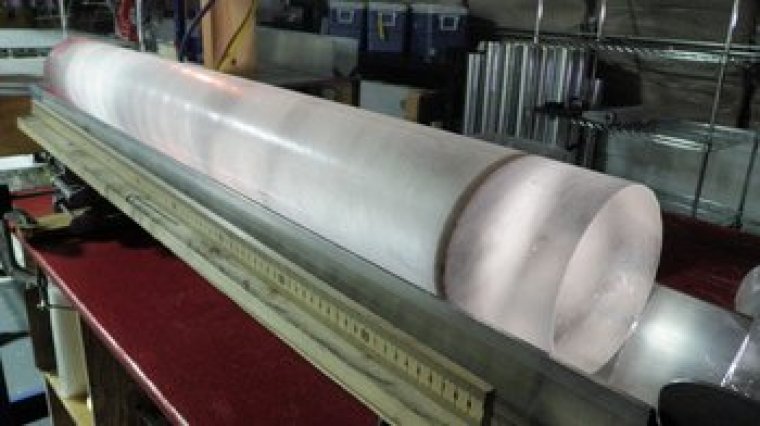| News / Science News |
Antarctic ice core reveals how sudden climate changes in North Atlantic moved south
NSF | APRIL 29, 2015
A new, highly detailed ice core reveals a consistent pattern of climate changes that started in the Arctic and spread across the globe to the Antarctic during planet Earth's last glacial period, tens of thousands of years ago.

An ice core from the West Antarctic Ice Sheet Divide project. The dark band is a layer of volcanic ash that settled on the ice sheet approximately 21,000 years ago. ![]()
Representing more than 68,000 years of climate history, data extracted from the core--a cylinder of ice that represents a cross-section of the ice sheet--is helping scientists understand past, rapid climate fluctuations between warm and cool periods that are known as Dansgaard-Oeschger events.
The new research illustrates how sudden climate changes that began in the North Atlantic around Greenland circulated southward, appearing in the Antarctic approximately 200 years later. Further, the new findings show how ocean currents were largely responsible for redistributing the heat between the Northern and Southern hemispheres in a process called the bipolar seesaw.
The ice containing the data is known as the WAIS Divide ice core. The cylinders that make up this core contain uniquely detailed information on past environmental conditions such as the atmospheric concentration of greenhouse gases, surface air temperature, wind patterns, and the average temperature of the ocean.
YOU MAY ALSO LIKE





